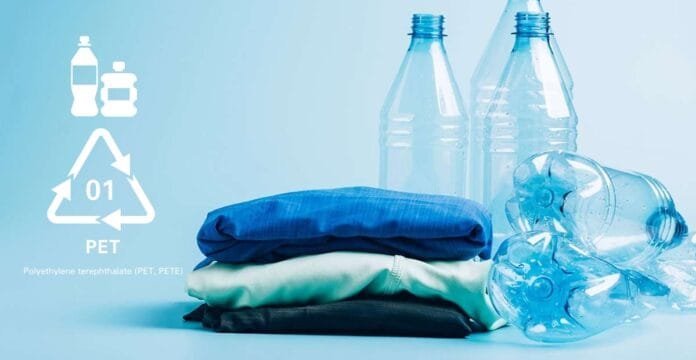Polyester is one of the most common fabrics in the world. Among its types, PET Polyester (Polyethylene Terephthalate) stands out the most. It is lightweight, durable, and versatile. Because of these qualities, it has become the backbone of the modern textile industry.
What is PET Polyester?
PET Polyester, also known as Polyethylene Terephthalate, is a synthetic fiber made from petroleum-based products. It is created through a process called polymerization. In this process, ethylene glycol reacts with terephthalic acid, forming strong and flexible fibers.
Although this may sound technical, the outcome is simple. The result is a fabric that resists shrinking, stretching, and wrinkling. Additionally, it is recyclable, making it one of the most eco-friendly synthetic fibers available today. Read More
Features of PET Polyester
PET Polyester comes with several qualities that make it special:
- Durability: It can withstand wear and tear for a long time.
- Wrinkle Resistance: Clothes made from PET keep their shape.
- Lightweight: It feels comfortable even in hot weather.
- Quick Drying: Moisture does not stay on it for long.
- Colorfastness: Colors remain bright after many washes.
- Recyclability: Old PET bottles are often recycled into polyester fabric.
Main Uses of PET Polyester
Type of Polyester Fabric: PET Polyester is found in many industries. Clothing is the most common one, but it does not end there. Here are some of its main uses:
- Clothing and Fashion – Shirts, trousers, dresses, sportswear, and jackets.
- Home Furnishings – Curtains, bed sheets, carpets, and upholstery.
- Outdoor Gear – Tents, backpacks, and sleeping bags.
- Industrial Applications – Conveyor belts, ropes, and filters.
- Packaging – PET bottles and containers.
Therefore, PET is not just a fiber; it is part of our daily lives.
Advantages of PET Polyester
Why is PET Polyester so popular? The answer lies in its benefits:
- Clothes made with PET last longer.
- It requires little maintenance.
- It blends easily with cotton, wool, and other fibers.
- It supports recycling, which helps reduce waste.
Although it is a synthetic fabric, its eco-friendly recycling option gives it an edge.
Environmental Impact of PET Polyester
Some critics argue that synthetic fibers harm the environment. This is partly true because PET is petroleum-based. However, the story does not stop there. PET is one of the few synthetic fibers that can be fully recycled. For example, used plastic bottles are often transformed into new clothes, bags, and carpets.
In recent years, many fashion brands have adopted recycled PET. As a result, waste has been reduced, and more sustainable choices are being made.
Conclusion
PET Polyester (Polyethylene Terephthalate) is more than just a fabric. It is a material that has shaped modern clothing, packaging, and home products. While it has environmental challenges, its recyclability makes it a better option than many other synthetics.
Because of its durability, low cost, and versatility, PET will likely remain important for decades. Whether you wear it, sit on it, or drink from it, PET is already part of your life.er continues to be relevant in modern industries.
FAQS
Is PET Polyester safe to wear?
PET is the most common type of polyester. While all PET is polyester, not all polyester products are PET.
What is the difference between PET and normal polyester?
PET is the most common type of polyester. While all PET is polyester, not all polyester products are PET.
Can PET Polyester be recycled?
Yes. It is one of the most recyclable plastics, often turned into new bottles, fibers, and fabrics.



